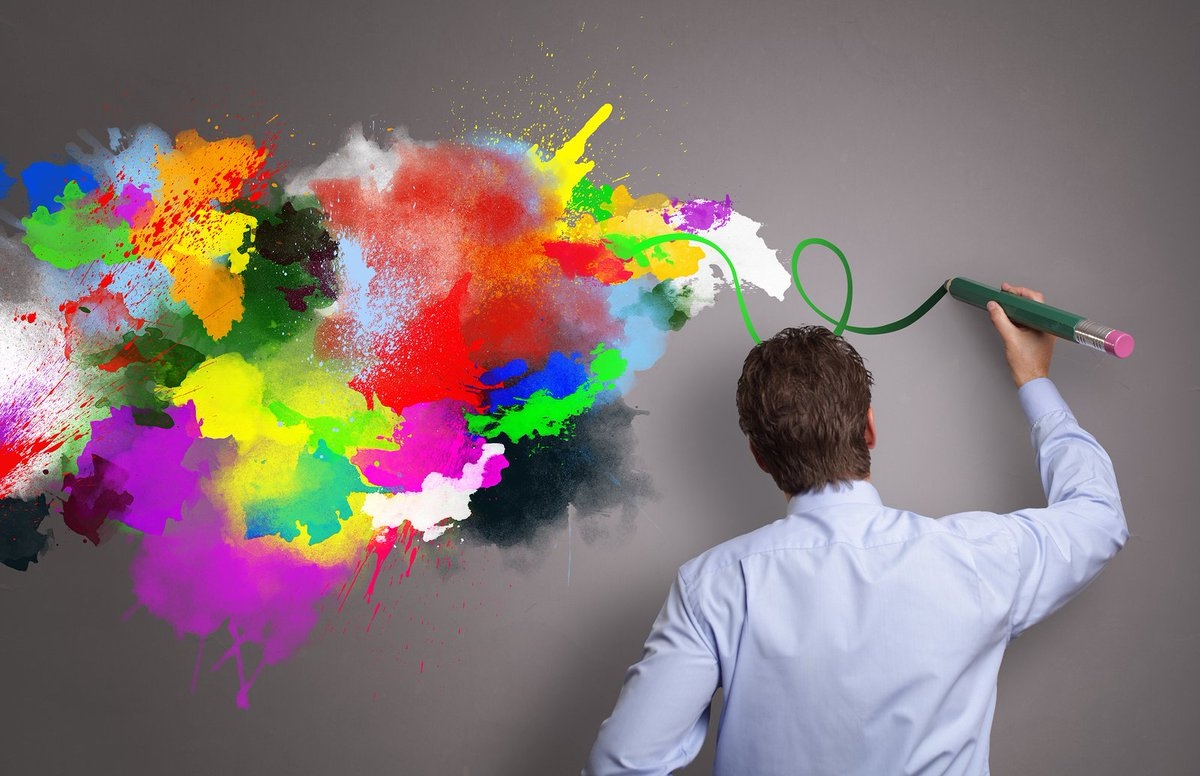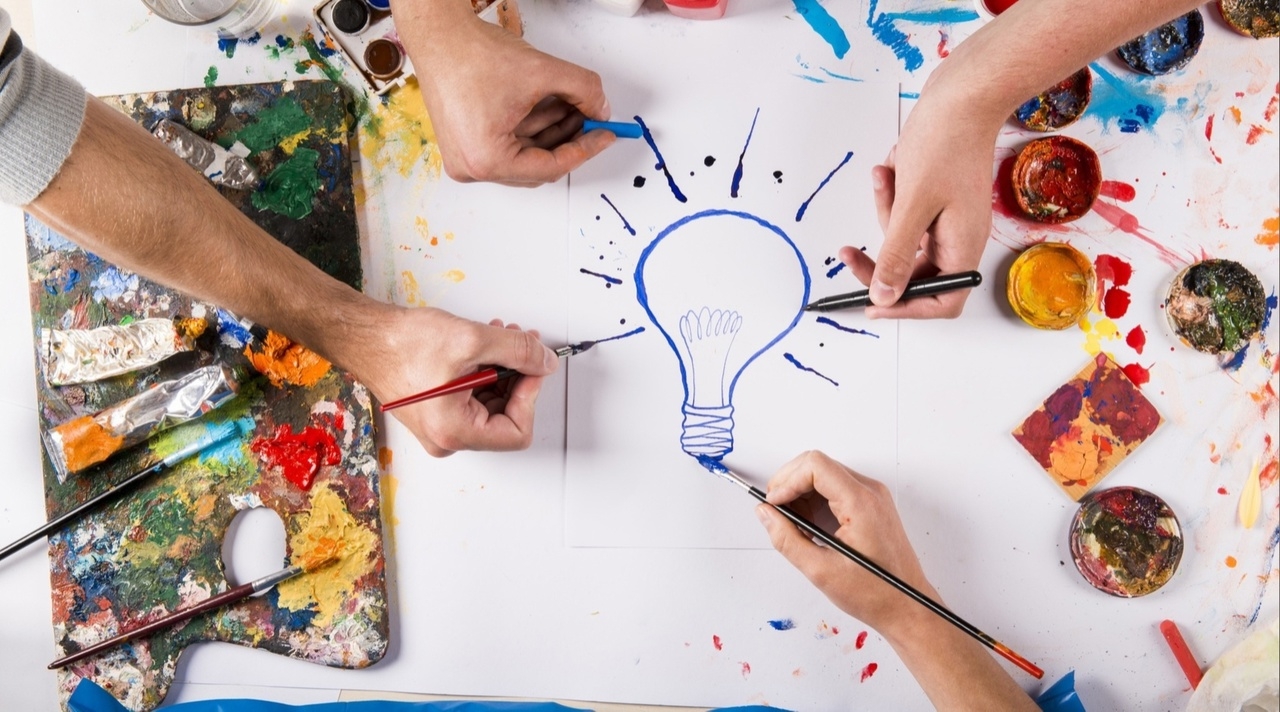23 Tips To Motivate Your Creativity
We all can be creative, but sometimes, we need to develop our creative side. Whether we work in the technical field or the artistic field, every field needs creativity.
The question is, how do you cultivate creativity? The answer is through the tips we will mention in this article, but first, let’s answer this question.
What is creativity?
Creativity is re-creating something that already exists or inventing something new and unique, using your own talents and skills. You use creativity when you employ your skills in new ways or turn your ideas into something real. Creativity can manifest itself in many forms, such as in thinking, art, music, and designing clothes. Moreover, creativity is something that can be learned.
How to become creative?
Creativity is not so much about realism as it is about overcoming mental limitations. For example, you may be asked to think of a hundred different ways to squeeze lemons, and you may be able to think of only two ways:
- Using hands.
- Using a juicer.
But if you think outside the box, you would come up with other methods, such as squeezing them by using weights in the gym. It may sound like a strange idea, but this is what is required of you to be creative, to come up with unfamiliar ideas. As a practical exercise, try to do a brainstorming session, and discover 10 different uses for an umbrella .
23 tips that will motivate you to be creative
1. Read a book on a new topic
Think about the last two books you’ve read, and you’ll probably find that you’re reading the same type of books every time. This is one of the reasons why we stop thinking creatively, for we are reading the same topics by the same authors, and that doesn’t help motivate us.
Repetition is the real obstacle in creativity’s face. To unleash your creativity, Robert Epstein, author of The Big Book of Creativity Games, says we must expand our knowledge by attending a class that offers unfamiliar information, or reading magazines on new topics.
Since all knowledge is linked together, you will become more creative the more you read because you will be able to integrate different ideas into a broader set of skills, or take on new experiences.
Practical steps
- Read a book that motivates change.
- Take an educational course in a field that is unrelated to your work.
- Read magazines on a different subject than what you’ve previously read.
- Read books in a field that you haven’t read about before.
- Practice a new sport, such as ballet.
2. Spend time with creative people
In his book, Never Eat Alone, entrepreneur Keith Ferrazzi talks about having strong relationships you can count on. These relationships help you in your field of work and success.
If you want to be creative, you must surround yourself with diverse and talented people. Whether we like it or not, we are affected by the people we spend our time with, so try to spend your time with people who support your creativity, not with people who drain it.
In short, spend your time with people who are creative in different ways, go out with people who have creative hobbies, do activities that you both are passionate about, or focus on unique areas to become an expert in.
Practical tip
Set up a date for dinner or to play board games like chess with friends. You can even meet with them through social media applications. What matters is that these people have interesting interests that boost your creativity.

3. Practice thought experiments
When you think of Albert Einstein, you might imagine a mad mathematician sitting behind his desk working on equations. Still, Einstein knew the power of imagination, which is academically known as the “thought experiment,” which is a mental activity a person can do to distinguish between possible work outcomes.
Most great thinkers used thought experiments. They can lead to powerful conclusions for seemingly insoluble problems, such as how to travel at the speed of light.
Einstein conducted his first thought experiment when he was sixteen years old. He tried to imagine what it would look like to travel so fast that you turn into something like a beam of light. This is just one of Einstein's thought experiments that eventually led to his creation of the theory of relativity.
The question is, how do you conduct your thought experiment? Thought experiments are straightforward, here are steps to think in a genius way like Einstein:
- Imagine a scenario. What is your creative problem? Visualize the problem in your mind and try to solve it.
- Determine your actions. What actions can you take to overcome the obstacles? What prevents your creativity? How do you get rid of this obstacle? After answering these questions, make a list of actions. It may be helpful to make a mind map or write down notes.
- Determine the outcome What is the outcome of each of these actions? How do you feel after this result occurs? Imagine yourself achieving the goal and result after unleashing your creativity.
Practical tip
Do a thought experiment whenever you hit a creative block. You can even imagine the things you do every day with some modification:
- Imagine that you are doing exercises with weights, but you are lifting heavier weights than you usually lift, or you are doing a new exercise.
- Imagine cooking dinner and preparing food you have not tried before.
- Imagine doing a routine chore in front of an audience.
4. Use a pocket notebook
You must have your cell phone, keys, and wallet in your pocket, but why don’t you put your notebook, too?
Writer and author Austin Kleon carries a pocket notebook to keep track of his random thoughts daily. This could help him unleash his creative abilities. Whenever he felt creative energy, he took out his notebook and wrote down the summary of his thoughts.
You may wonder why you do not use a notes app on your mobile phone. The answer is that the notebook and pen do not run on batteries that can die, and there is something special about handwriting that you cannot get through digital writing.
Practical tip
get a pocket notebook or two with a suitable pen, and when something creative comes to your mind, write it down in the notebook, you can even write down your favorite quotes you’ve read, favorite song lyrics, or the inspiration you felt from certain paintings, you never know when you could benefit from these writings in the future.
If you are not a fan of writing, you can record notes using the voice recorder on your phone or use applications such as Notion.
5. Spend some time in a natural environment
You may not like sitting in your house all day, but you're not the only one who doesn't. A study published in the Creativity Research journal showed that spending time in a natural environment can stimulate creativity.
5 Environmental factors have been proven to boost creativity
- Complex visual details in the environment, such as paintings or art.
- A view of a natural environment, as in sitting near a window overlooking a natural landscape.
- Using natural materials, such as wood.
- An environment in which there are not many cool colors, such as blue and purple.
- Using less manufactured materials such as plastic.
Practical tip
try to sit in a place close to nature:
- Put some plants in your office.
- Go to places with greenery and trees.
- Set a natural landscape picture as a background on your computer.
- Hang some nature paintings.
- Add some warm colors to the walls of your home and office.
- Sit by a window or balcony.
- If you work remotely, work from a garden or café overlooking a natural landscape.
- Listen to some music that stimulates the imagination of natural landscapes.
What matters is that you try to bond more with nature. The more connected you are with nature, the greater your creativity. If you are cannot put some plants in your office, try going for a walk in the garden, and thus, you will reap a double benefit, as a study by Stanford University showed that walking stimulates creativity by 60%.

6. Take a silent break
When it comes to taking breaks, being quiet is important. Let’s say you’re taking a break, listening to your favorite podcast, or learning and discovering something new and feeling good, but that doesn’t help creativity, according to a study called Extra Noise by Noise Pollution. This is a phenomenon that occurs when your brain is constantly receiving new information from external sources, not having a chance to relax.
Therefore, thinking silently can help restore your mental energy and stimulate creativity. It is similar to your need to rest after exercise. Your mind also needs time to recover from exhaustion after work, which is achieved by taking quiet breaks without noise.
Practical tip
You will feel you need a quiet break when you have stopped being creative. You can set an alarm for 5-10 minutes and sit alone, and during this period, you can practice meditation.
7. Set a deadline
The mistake that many creative people make is that they do not complete the projects they start, and no matter how much progress they make, they always find new things to change or add in their pursuit of perfection, so the project is never finished.
However, even if you expect that you have reached perfection, someone else can look at your creativity and discover dozens of errors in it, so it is useful to emphasize that the goal of creativity is innovation, not perfection.
Practical tip
Start your project and set a strict deadline for it. According to Parkinson’s Law, people seek to make the most of their time during the time allotted to them to complete tasks, and this is one of the factors that lead to procrastination. For example, you start to work slowly while you’re distracted, but once the deadline approaches, you feel like you’re doing all you can.
But suppose you are practicing a creative activity for fun and learning only, and you don’t have to meet a deadline. In that case, you can schedule the days you share your work with a friend or family member, then set deadlines for getting the job done and tell them what you’re working on so you can feel responsible.
8. Stay happy
A study led by Dr. Karen Gasper, a professor of social psychology at Penn State University, found that sadness reduces creativity and also found:
- Sad and happy undergraduates were assigned to do a task in different ways.
- The sad students’ solutions were less creative than the happy ones.
- The reason may be that when we feel sad, we are more wary of making mistakes and are more conservative, and when we are happy, we feel more intellectual freedom, allowing us to come up with new and more creative ideas.
Practical tip
Try to overcome sadness and frustration and learn how to be happy. The good news is that happiness is a skill that can be learned, and it is useful to work on that constantly.
9. Stay motivated no matter how hard things get
When you try to innovate something new, you will likely encounter many obstacles. However, the real measure of whether your endeavors are correct and will be successful or not is whether you still feel motivated to perform the work in the times when you have doubts and feel frustration and failure.
The author, Elizabeth Gilbert, describes the years in which she struggled to become a successful writer and added that she never lost her passion for her profession. To her, writing was a part of her entity, and no hardships, no matter how difficult, can make her doubt that fact. If your creative pursuits spring from genuine desire, you will feel as Gilbert did.
Practical tip
Ask yourself: “Is your creative endeavor what you want?” If the answer is yes, try reading about how to turn failures into opportunities for success.
10. Keep doing your daily work
In her book, Big Magic, Gilbert reveals just how wrong it is to say that to live creatively, you must become a full-time artist who risks everything else in life for the success of their art.
While this saying may work for many people, it ignores that you can work a full-time job, have stable relationships, participate in other activities, and still be very creative. The secret is to make creativity part of your daily life.
3 easy ways to incorporate creativity into your daily routine
- Set aside some time you spend on social media or watching TV to work on creative projects.
- Start your day when you wake up with a creative activity, or do it before sleep.
- Invite your friends to join you for classes or join you in your creative hobbies, and thus make it a group experience.
Practical tip
try to turn your creative activities into a side business to make money.

11. Make use of dreams to discover solutions
Dr. Barrett at Harvard Medical School asked students to think of a problem they were trying to solve each night before sleeping. She found that 34% of the students had a dream that solved their problem.
Dreaming helps to enhance our creativity
for example:
- Retired golfer Jack Nicklaus dreamed of getting his golf course right and recovering from failure.
- Scottish novelist Robert Louis Stevenson devised the plot of the famous movie “Dr Jekyll and Mr Hyde” through a dream he had.
- Musician Paul McCartney discovered the melody of “Yesterday” through a dream, which inspired writing the song “Yellow Submarine”.
Dream machine technique
Dreaming helps us focus on our problems without getting distracted, and this is where the dream machine technique comes in:
- Get an empty box: any cardboard box, such as the box for your new cell phone, and write “Dream Machine” on it.
- On a piece of paper, write down one or two major problems you want to solve in your life that need some creativity. It could be an idea for a business.
- Put your problems into the dream machine, and take 5 minutes each day before bed to think of solutions to your problems. This technique may work by merging imagination and dreams, and through it, we feel that we have taken the problems out of our thinking and we are trying to find a solution to them in real life. By using our dreams, we can focus on these problems without our focus getting distracted, in contrast to focusing on them in the full waking state.
Practical tip
Create a dream machine, and focus your problems through it each night.
12. Doodle
We are not saying that doodling will lead to a masterpiece. The direct purpose of doodling is something else, which is to stimulate your creative thinking. Take out a piece of paper and just doodle on it. What matters while doing this exercise is to have fun, don't focus on the end goal, focus on the mess you're making, and try to have fun.
Practical tip
Doodle on a blank canvas, using simple means like pencils and crayons, and draw whatever comes to your mind.
13. Use the "Bob Ross" painting technique
Try painting using the style of Bob Ross. If you don't know who Bob Ross is, he is the painter and host of The Joy Of Painting.
Practical tip
get acrylic colors with a brush and canvas, watch one of Bob Ross' YouTube clips, and imitate his painting style.
14. Find Inspiration
This is an easy but effective step. Slow down a bit during what you do in your day, and try to find inspiration for what you do. Wherever you are and whatever you do, try to find a source of inspiration.
Practical tip
set your alarm three times during the day, and when it rings, stop what you are doing for a minute and look for inspiration. combine this tip with the notebook tip we mentioned above, and also try to change your seating position, for example, sit on the other side of your desk. You may find something different or gain a new perspective.
How To Be Creative In Writing?
Writing can be a tedious activity. Sometimes you feel like your creativity is completely blocked, but with this exercise, you will break out of your writer's block.
15. Take inspiration from other writings
Writing stories, especially fantasy stories, is very difficult because you are building a whole new world from scratch.
Let’s take inspiration from the Harry Potter story, using rewriting technology, we can find new and creative ways to develop a story without creating a whole new story. In this case, you get the hard work done, and you can even reinvent the characters.
In our example, we will replace Harry Potter with Gary Potter, who is also accepted into Hogwarts, but instead of fighting Voldemort, the dark lord, he is fighting an army of angry cakes.
Practical tip
think of a story, characters, or world you’d like to write about and take similar elements, but add your own touch.
How To Become More Creative In Drawing?
Try these general drawing tips, no matter how proficient you are.
16. Draw with the hand you don’t usually use
If you are a painter, you tend to use the right or left dominant hand, but in this exercise, we will change this habit. Using your non-dominant hand is a lot like riding a bicycle for the first time, you will make a lot of mistakes, but you will learn along the way, and the benefit of this exercise is that you will have to draw slowly and think about the basics of drawing.
Practical tip
Draw something with the hand you don’t usually use, and set aside a time each day or a day of the week or month to practice this exercise.
17. Employ your feelings in drawing
Some people may draw better when they relate feelings to the artwork they are making. You may be able to feel that your drawing is alive and full of feelings. In any case, when you have feelings associated with your artwork, your creativity flows better.
Practical tip
Try drawing something sentimental, such as a pet, a family member, or a toy you used to play with as a child. In your later work, try to create a story for your artwork.
Creative hobbies
Here are some creative hobbies that you can practice in your free time:
- Souvenir collecting: Try collecting stamps, coins, exotic jewelry, or souvenirs. You can add something new to your collection, like rocks or dried flowers that you collected from unique places you've visited. When you look at your collection, you will have unique objects representing your memories.
- Reading Clubs: If you are interested in reading, try to make it a group experience. Reading clubs are a great way to share your ideas with others, plus you can spend time with other creative people.

18. Learn a new language
Studies show that multilingual people are more creative than monolingual people. Learning a new language allows you to express your thoughts through new words and ways.
19. Make use of old stuff
You might have a lot of scraps, try using these things creatively. You can use them to give your car or bike a new look.
20. Practice the art of origami
Origami is the Japanese art of paper folding. You can make traditional things out of paper, like a paper crane or a frog, but you can take this hobby to a higher level, also by watching origami videos on YouTube.
21. Be creative with your workout
You probably do push-ups every day, so try some of these tips:
- Practice yoga.
- Learn a new martial art.
- Learn to dance on the treadmill.
- Practice Qigong
22. Listen to music
Studies show that regardless of the type of music you listen to, they all encourage creativity, and according to Professor Adrian North of Heriot-Watt University, regardless of the disparity in the history of the emergence of classical music and metal music for example, they are very similar.
23. Practice cooking
Creative cooking is a great hobby, you just have to get a recipe from someone or the Internet, and add your touch. It can be something simple, like adding some cinnamon to a lemon cake, or you can add something strong, like adding bacon to yogurt.
Why Is It So Difficult For Us To Be Creative?
Research has found that the fear of standing out is the main reason people fail to come up with innovative solutions or to express themselves creatively. However, when you refuse to share your ideas with others or to take part in creative activities, you are depriving yourself and the world of things that might be useful.
In Conclusion: Avoid Labels
Since childhood, we are subjected to an attempt to label us by our parents or teachers at school. They see that we succeed in one field rather than the other, and they classify us on this basis. They do not have bad intentions. They are trying to direct us to the field that they think we will succeed in.
But the result is that we are labeled at an early stage in our lives as creative or non-creative, and these labels greatly affect the areas in which we seek success, so we must understand that these labels do not define our capabilities, in addition to the following:
- Every person is creative: If a group of people is asked to draw a house, each person will draw it differently, because each one of them is creative in their way.
- Every choice you make in your life is a creative one, so stand up for your choices.
- Creativity is a habit, not a talent. It is a practical thing, the more you use it, the more developed and stronger it becomes. It is a conscious choice during which you evaluate the decision that you will make and add creative touches to it, and this choice eventually becomes a habit.